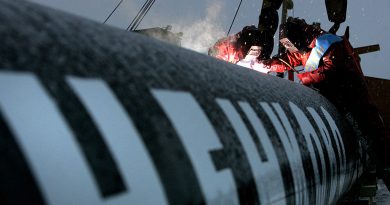Report lists hundreds more species as endangered in Finland

A new assessment of the status of Finland’s wildlife has concluded that 420 more species in the country can now be considered threatened. The 2019 Red List of Finnish Species assessed over 22,000 different species, 1,020 species more than the previous assessment in 2010, the last time the threat to Finland’s mammals, birds, insects and organisms was assessed.
The fifth in a series of assessments, the report determined that conditions are worsening for Finland’s flora and fauna, as 11.9 percent of the species examined can now be determined threatened. This number is an increase from the 10.5 percent that was concluded to be at risk in 2010.
Birds hit hardest
The list of endangered or extremely endangered species contains many birds. Some of the birds on the list include the snowy owl (tunturipöllö in Finnish), oralan (peltosirkku), kingfisher (kuningaskalastaja), ruff (suokukko), common swift (tervapääsky), rough-legged buzzard (piekana), Eurasian eagle-owl (huuhkaja), lesser black-backed gull (selkälokki), house sparrow (varpunen), common eider (haahka) and the European greenfinch (viherpeippo).
“Things are bad for the birds. The changes have been dramatic,” says Ulla-Maija Liukko, a senior researcher at the Finnish Environment Institute (SYKE) and one of the authors of the report.
There are also 41 mammal species on the list, including the Arctic fox (naali), Saimaa ringed seal (saimaannorppa), the wolf (susi) and the wolverine (ahma).
Fish species on the list include the landlocked salmon (järvilohi), European eel (ankerias) the lake species of the Arctic char (järvinieriä).
The list also includes many endangered species of moss, lichen, vascular plants like ferns, butterflies and moths, and insects. About ten percent of Finland’s insects were judged to be at risk, mirroring a world-wide trend.
Forestry plays an important role in habitat loss
The 2019 Red List states that as much as 42 percent of all species live in Finland’s forests, with 30 percent of the threatened species using it as their primary habitat.
“The most important reasons why species become threatened and extinct are the changes in forest habitats caused directly or indirectly by forestry, especially forest regeneration and management activities, and the decrease in old-growth forests, tall large trees and decaying wood. The second most important reasons are afforestation and other overgrowing of open habitats, such as meadows, grasslands and mires,” the report says.
Luikko says that there is much that Finland can do to stop the extinction of species in its natural environment, especially in the area of swampland and bird habitat conservation and awareness.
“In order for the situation to really change, we have to learn to think in a new way across all sectors that utilize natural resources,” she says.
“It wouldn’t even necessarily mean major economic sacrifices, if people just stopped to think about the value of certain areas and how activities could be adapted to have as little effect on the location’s biodiversity as possible.”
World leader in species assessment
The fifth Red List of Finnish species follows categories and criteria determined by the International Union for the Conservation of the Nature (IUCN). In addition to the previous four extensive assessments in 1985, 1991, 2001 and 2010, extensive assessments were conducted for mammals and birds in 2015.
The work to assess the over 22,000 species was coordinated by the Finnish Environment Institute. It included 180 experts from the country’s universities, the Natural History Museum, the Natural Resources Centre, the state-owned forest administrator Metsähallitus, and the Finnish Mammalian Society. A steering group of the Ministry of the Environment oversaw the work and approved the working groups’ assessments for the report.
It is estimated that at least 48,000 species live in Finland, and the 2019 assessment of about half of these can be considered one of the world’s most comprehensive, comparatively.
Related stories from around the North:
Canada: Ottawa considers listing Labrador caribou herds as at-risk species, CBC News
Finland: Finland’s environment suffering from human activity, report says, Yle News
Norway: Urgent action needed to protect Arctic Ocean, WWF says, The Independent Barents Observer
Russia: Authorities in northwest Russia move to protect wild reindeer, The Independent Barents Observer
Sweden: Poachers suspected behind dwindling wolf numbers in Sweden, Radio Sweden
United States: Communities wrestle with shark-bite mystery off Alaskan coast, Eye on the Arctic



